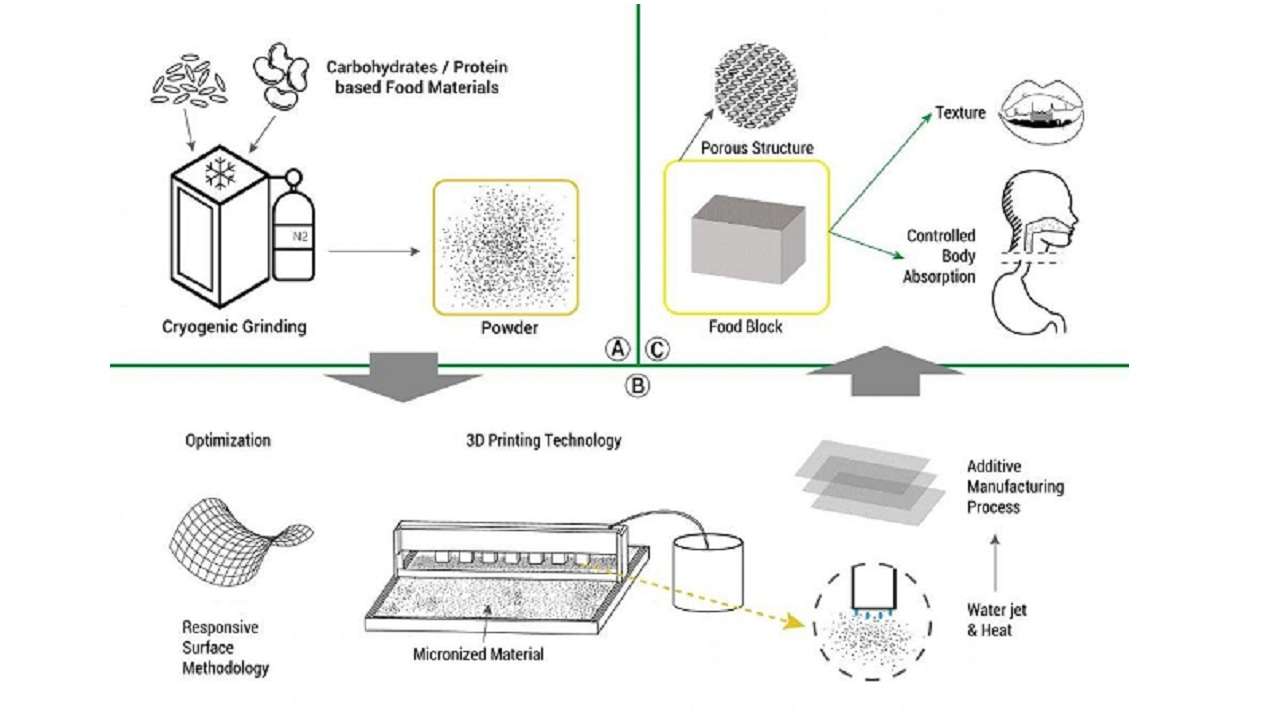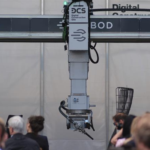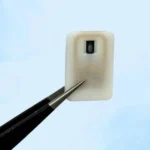Researchers at Ewha Womans University in South Korea are looking to take food printing to the next level by introducing a nutritional focus to their designs. The food printer the researchers have developed arranges food in such a way that it becomes easier for the body to absorb. The research is a massive step forward for 3D printing of consumable products.
Associate professor Jin-Kyu Rhee recently detailed his findings at at the annual Experimental Biology meeting in San Diego last month. They developed a prototype 3D printer that has a staggering 357 nozzles in its arsenal. The printer uses an “ink” comprised of flash-frozen food bits, cryogenically preserved and ground into a powder.
The team see this new printer as a means for providing nutritional meals while also cutting down on food wastage. They also believe that their technology can be of immense aid in areas where food is scarce. Clearly, there are many future uses for such a technology. Another possible utility is in longer storage and transport to far off regions of the world or during space travel.
Revolutionizing Nutrional Foods
According to the study, the researchers developed food materials using the following process:
First, carbohydrates/protein-based food materials were cryo-powdered to render an amorphous shaped- micronized- materials with characterization. Subsequently, modification of structure with this micro-sized food materials has been re-crystallized by controlling water contents and heat.
The team analysed the food very thoroughly, employing the use of X-ray tomography and electron microscopy. This allowed them to make certain that the food is chemically consistent and aesthetically pleasant. With the aid of these devices, the researchers plan to create models that the printer can use as a reference for fabrication.
By balancing the various ingredients the printer can create many different arrangements of the food. This allows it to tailor each meal to the precise nutritional properties the consumer may demand. Rhee has stated that the next goal of their research is to enhance absorbability and storage time. Even though the research is fairly fresh, it presents a way forward for food printing to become something new.
An abstract for the study is available here.











